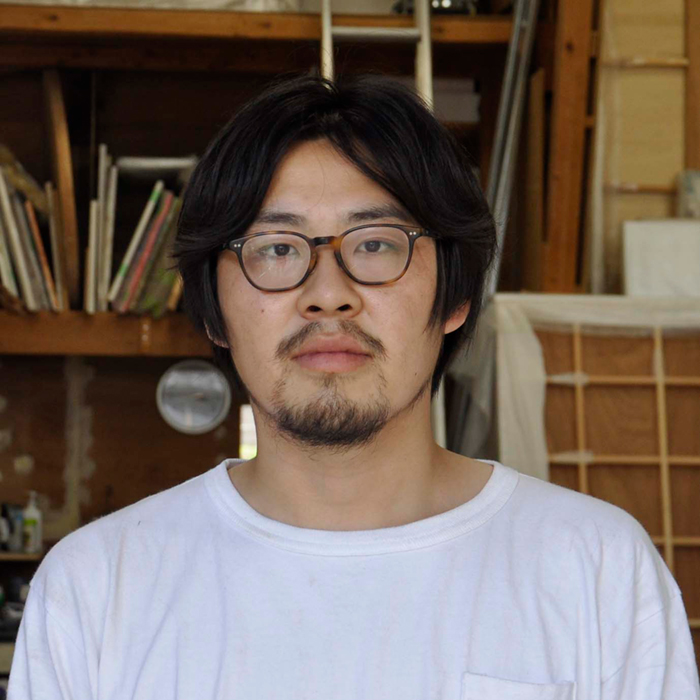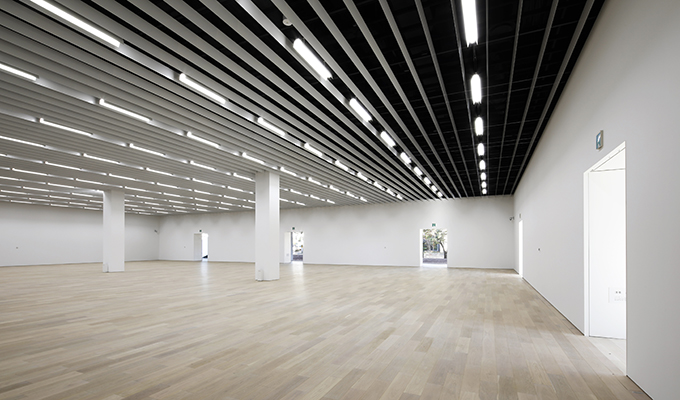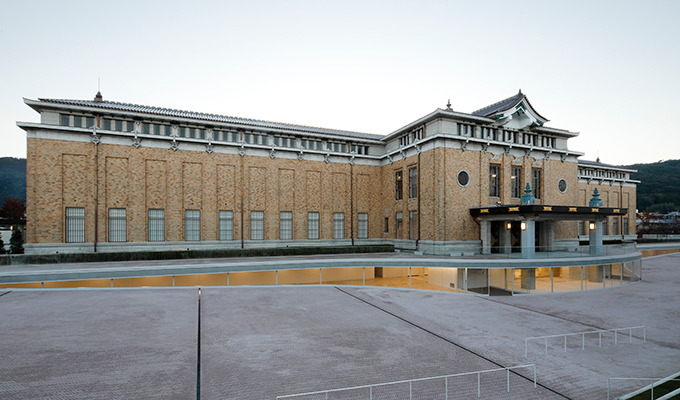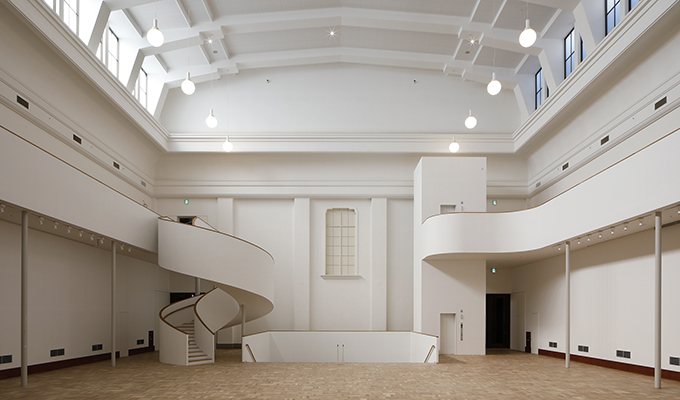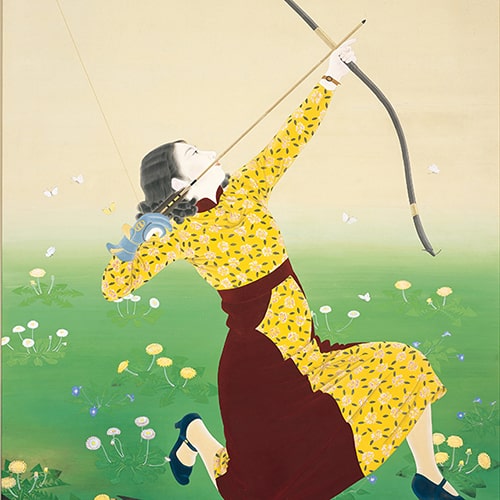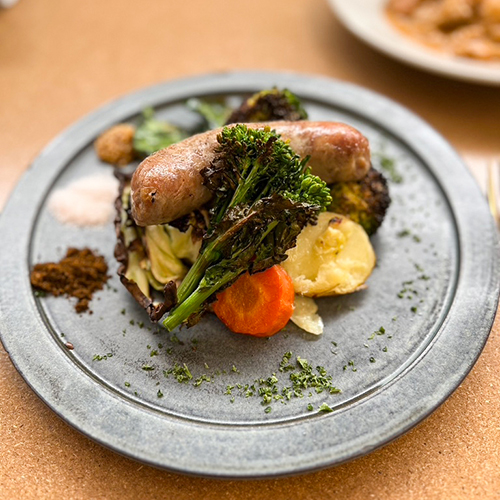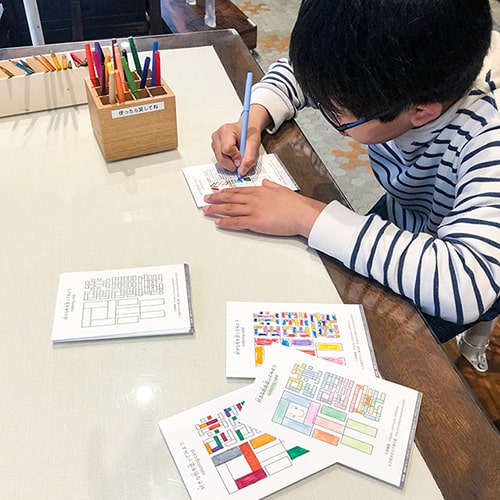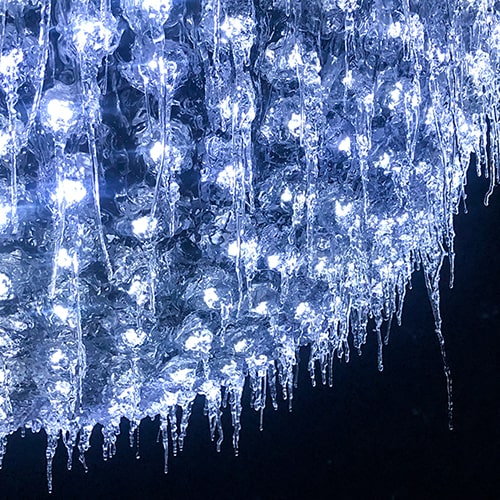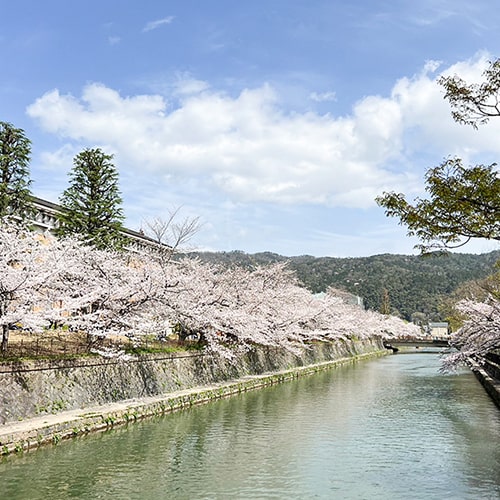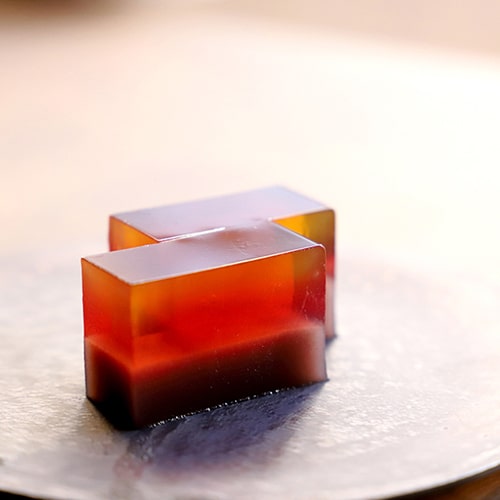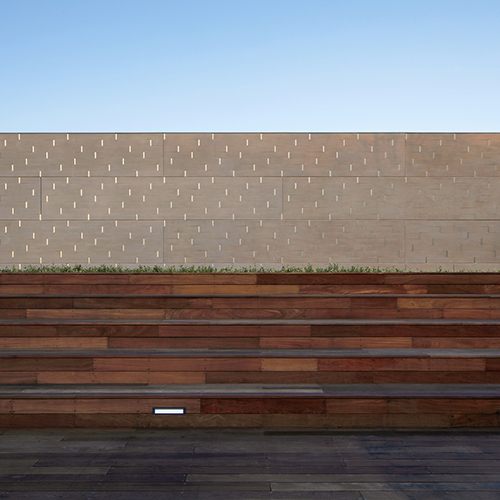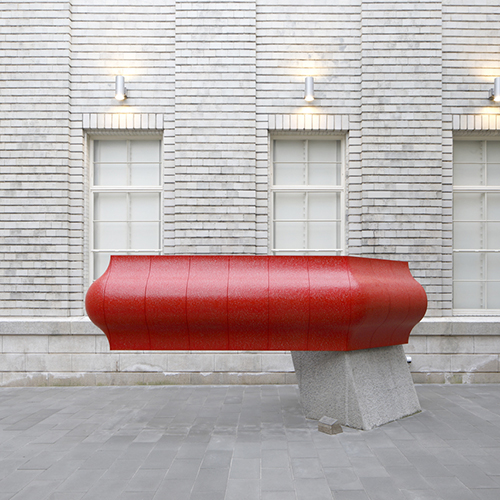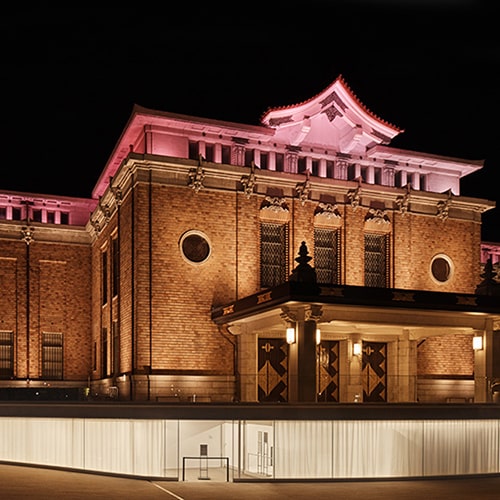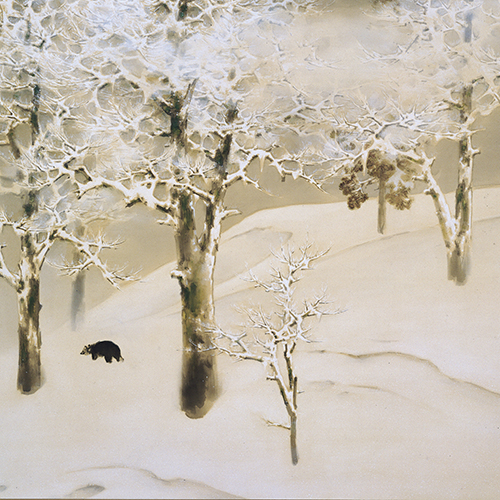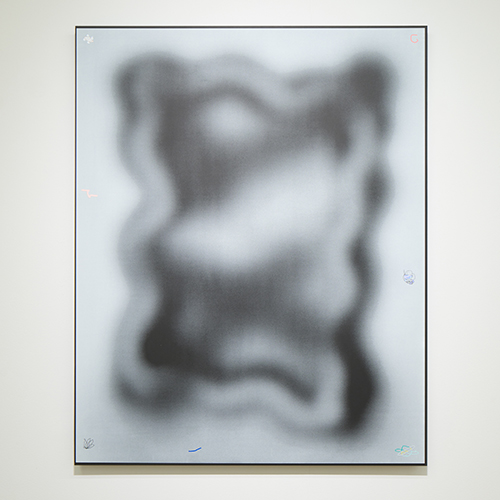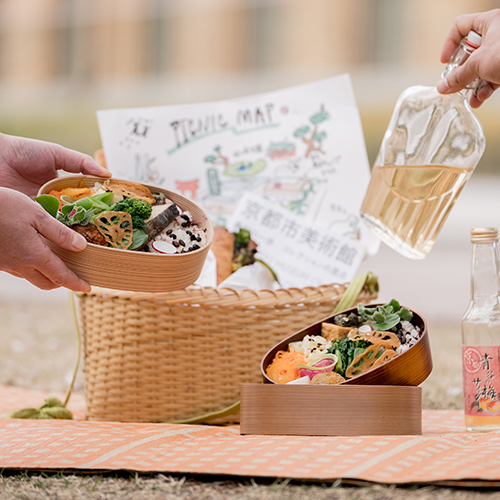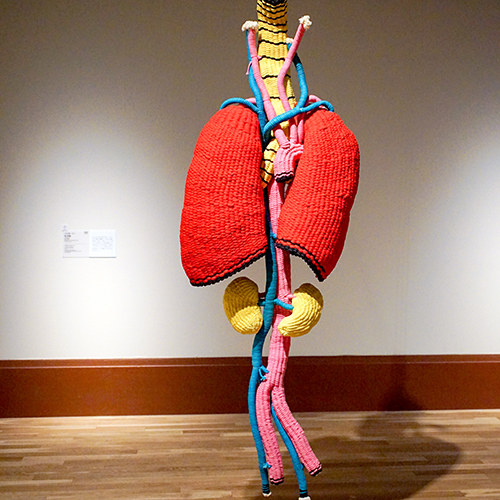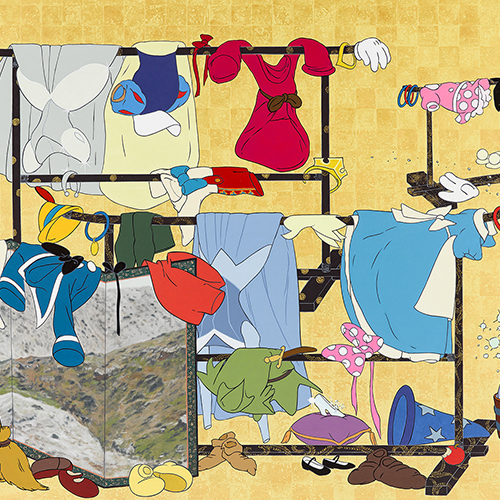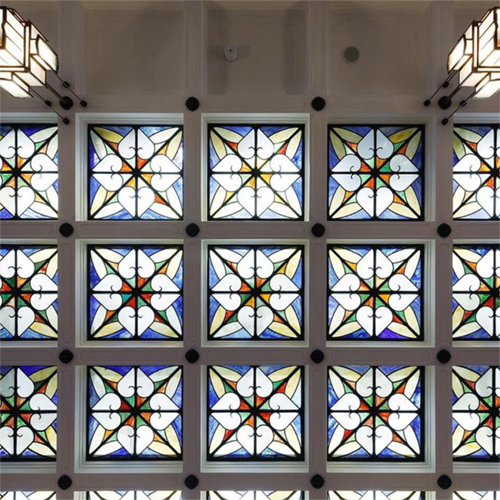The Triangle
MIKADO2: Fugue for Crocodiles
2024/10/19-2024/12/22
Venue [ The Triangle ]
-
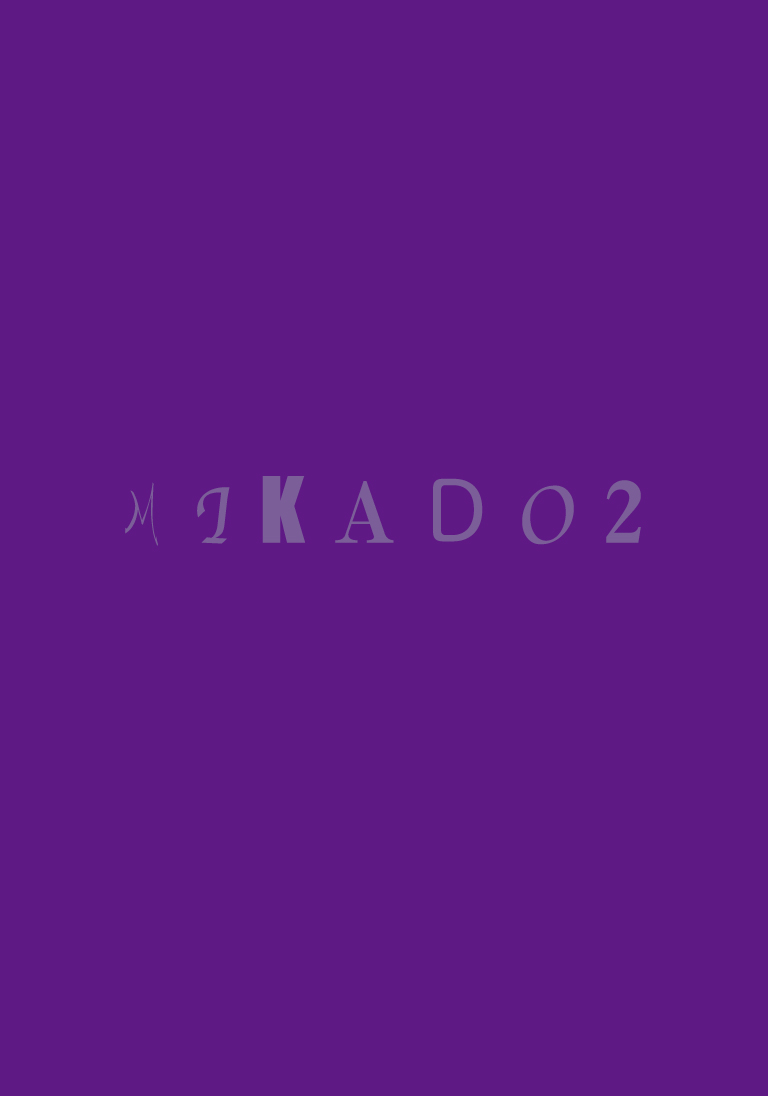
This exhibition introduces the work of MIKADO2, an artist collective comprising Yamada Shuhei, Koike Kazuma, and Jinba Keisuke.
From paintings filled only with the words “Ha Ha Ha” to neon signage that says “bright future,” Yamada’s detached and Dadaist work is both conceptual and humorous. Koike’s work examines cult images through the lens of cultural anthropology, creating paintings with a strong narrative and ceramics that function as unique totems. Jinba explores a painterly practice that retraces highly personal experiences and art history. This collaboration between three very different artists results in a contemporary and hybrid form of expression with a distinctive groove.
MIKADO2’s idiosyncratic practice creates absences and misalignments in artistic formats, accompanied by actions and attitudes that initially resemble meaningless play.
In the words of the collective: “Our practice is like a stone used to strain water that sinks to the bottom of a river.”
The Triangle
The Triangle is a space newly created for the reopening of the Kyoto City KYOCERA Museum of Art. It aims to nurture emerging artists, especially those associated with Kyoto, and to provide opportunities for museum visitors to experience contemporary art. In order to connect the artist, museum, and viewer in a triangle and deepen those connections, the space hosts an eponymous series of special exhibitions and presents new artistic expressions from Kyoto.
Information
- Period
- October 19 (Sat.) - December 22 (Sun.), 2024
- Time
- 10:00-18:00
- Venue
- The Triangle
- Closed on
- Mondays (except public holidays)
- Admission
- Free admission
Artist Statement
The True Identity of Crocodiles
MIKADO2 maintains an organic form for engaging in activities through playful gestures as an artist collective, mainly dealing with art institutions. It has to date held exhibitions exploring absent curators, fictitious collectors, and the absence of the usual state of things.
This exhibition is about crocodiles in mythology.
Crocodiles make frequent appearances in ancient Japanese chronicles. In the Hare of Inaba myth, for instance, the titular hare crosses the sea from the Oki Islands by walking over what are called crocodiles, while the goddess Toyotama-hime is the daughter of the sea deity Watatsumi whose true form is a fourteen-meter crocodile. But are these crocodiles the same creature as the reptile we know today as a crocodile? After all, the crocodile did not exist in ancient Japan.
During the Meiji period (1868–1912), the modern Japanese nation-state developed with the emperor at its center, and these ancient myths were treated as part of a history of Japan that undergirded the legitimacy of the emperor, and whose accuracy was supported by archaeology and a Japanese school of philosophy. The strange creatures described as crocodiles in ancient myths, and around which various theories abound (from being sharks to other creatures or even boats), were regarded as the reptile of the same name during the Meiji period, but then as sharks in the Showa period (1925–1989).
These “crocodiles” that appear in ancient Japanese myths are always accompanied by an intriguing sense of mystery over what they actually are. In the end, the various ways of writing “crocodile” in Japanese never seem able to identify the creature itself, which is always stuck in a bamboo grove of multiple interpretations like the Akutagawa short story.
The exhibits place the crocodile and goddess in this bamboo grove of gaping uncertainty, and became artworks by the various links that are assigned to them.
Like people express their identity through the images they upload to Instagram, a link is a kind of added value. We have used lots of links to make the exhibition more “appealing.”
Given more luster by these links (added value) in order to add theories about mythological creatures and boost the splendor of that uncertainty, our works exude a strange feeling of déjà vu as they are reinterpreted, eventually taking root as a body garbed in a new mythos.Artist Profile
MIKADO2
The artist collective MIKADO2 was founded in 2021. Active irregularly, it comprises Yamada Shuhei, Koike Kazuma, and Jinba Keisuke. Past exhibitions include MIKADO2 (Zuiun-an, Kyoto, 2021), MIKADO2: My baby collection (Tezukayama Gallery, Osaka, 2022), and Rivers never cease to flow and, (Takashimaya T8 Gallery, Kyoto, 2024).
Yamada Shuhei
Born in 1974, Yamada Shuhei is a Kyoto-based artist. He trained at Tama Art University, leaving without completing a degree. He has held solo exhibitions at Der-Horng Art Gallery (Taiwan, 2024), ARTRO (Kyoto, 2023), SOKYO ATSUMI (Tokyo, 2023), Daiwa Anglo-Japanese Foundation (London, 2019), AISHONANZUKA (Hong Kong, 2017, 2016, 2014), the Armory Show (New York, 2013), Capsule (Tokyo, 2012), and more. His other major exhibitions include Positionalities (Kyoto City University of Arts Art Gallery, 2022) and Next World – Taguchi Art Collection × Iwaki City Art Museum (Iwaki City Art Museum, Fukushima, 2021). In 2003, Yamada won the New Cosmos of Photography Excellence Award. In 2017, he was selected for the International Studio & Curatorial Program residency program in New York.
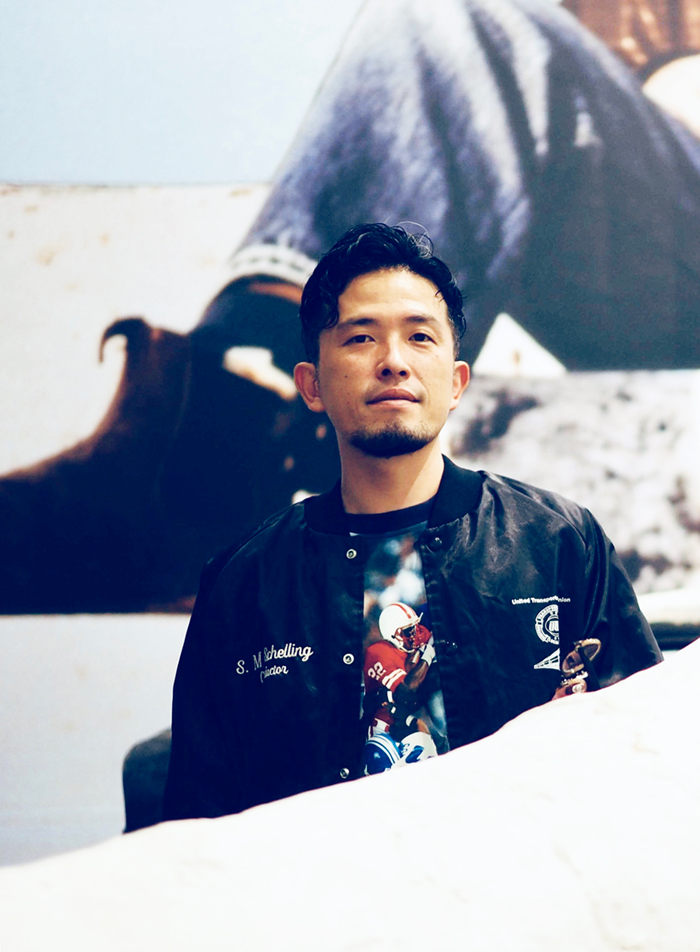
Koike Kazuma
Born in 1980, Koike Kazuma is an Osaka-based sculptor and painter. He spent his childhood in Buenos Aires and his high school years in Barcelona. He graduated with a degree in sculpture from Nihon University College of Art. Koike has held solo exhibitions at The Fridge (New York, 2024), Sokyo Annex (Kyoto, 2024), cadet capela (Paris, 2023), OMURO MUSEUM (Mie, 2021), Tezukayama Gallery (Osaka, 2020, 2017, 2014), and AISHONANZUKA (Hong Kong, 2019, 2016, 2013) as well as shows at AISHONANZUKA with Jordy Kerwick in 2024 and Djordje Ozbolt in 2023, and with Henrik Godsk at HAGD Contemporary (Denmark) in 2023.
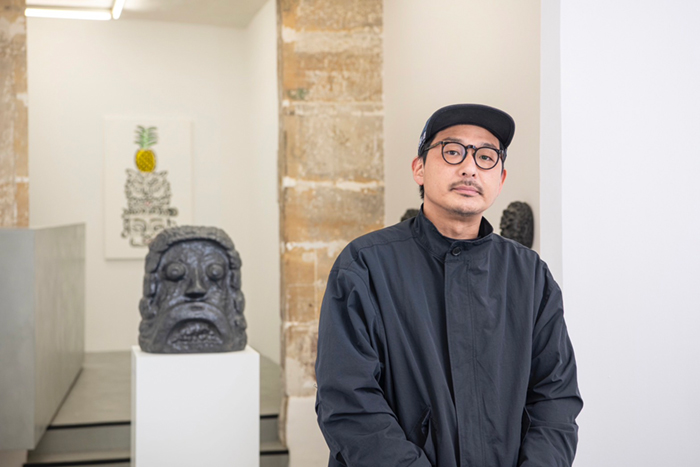
Photo: Hiroki Taguma Jinba Keisuke
Born in 1985 in Aichi and raised in Hyogo, Jinba Keisuke is a Kyoto-based artist. In 2011, he completed graduate studies in contemporary art practice at Kyoto University of Art and Design. His major exhibitions include Keisuke Jinba: I’m calling (YamaYama, Kyoto, 2024), When Potatoes Become Fries (VOU, Kyoto, 2022), The Yo-e-ro-sun: Tasuneru (VOU, Kyoto, 2021), Natural Outcome #6 (Housing Complex, Personal Experience) (LEESAYA, Tokyo, 2019), Natural Outcome #2 (Appreciation and Interference, Language Ability, Circumferential Orbit) (Gallery PARC, Kyoto, 2018), and VOCA 2016 (Ueno Royal Museum, Tokyo, 2016).
